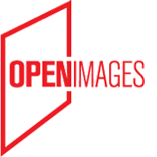Media item
Open Culture Data - app competition: results and lessons-learned (subtitled)
closeLicense
Creative Commons – Attribution-Share Alike
 You are free to remix, tweak, and build upon this work even for commercial purposes, as long as the author or licensor is credited, and new works are licensed under identical terms.
You are free to remix, tweak, and build upon this work even for commercial purposes, as long as the author or licensor is credited, and new works are licensed under identical terms.
closeDownload
- MP4 (512x288, sd 51.5 MB): 06/39/639654.639529.3_3_OCD_App_comp[..].mp4
- MP4 (1920x1080, hd 94.3 MB): 06/39/639656.639529.3_3_OCD_App_comp[..].mp4
- WEBM (512x288, sd 48.6 MB): 06/39/639658.639529.3_3_OCD_App_com[..].webm
- OGV (512x288, sd 12.7 MB): 06/39/639650.639529.3_3_OCD_App_comp[..].ogv
- OGV (1920x1088, hd 174.7 MB): 06/39/639652.639529.3_3_OCD_App_comp[..].ogv
- MOV (1920x1080, source 312.2 MB): 06/39/639529.3_3_OCD_App_comp_02-07_[..].mov
Part 3 of 4 videos about the Open Culture Data network.
In order to create interest in the open culture datasets and stimulate reuse, we launched our own app competition that ran from June 16 to December 31, 2012. We set out three main challenges for the developer community: create applications that expand audience reach (online, offline, on site), create applications in which the audience is reached in novel ways, create applications that connect different datasets. We awarded four prizes: three general gold, silver and bronze ones and the National Archives made their own special prize available.
We participated on two hackathon events organized by Hack de Overheid in June and October 2012, and a smaller one specifically aimed at reuse of the data in games right before the December 31 deadline. Furthermore, many presentations to raise awareness of the competition and Open Culture Data itself were held, for instance at a developers conference, the Wikimedia Netherlands conference, and Communication and Media Design students made apps as part of their courses. In total, twenty-seven apps were submitted for the competition. The four that won were:
- Gold prize: Muse app, developed by Femke van der Ster, Jelle van der Ster, and Peter Henkes of No strings.
- Silver prize: Histagram, developed by Richard Jong of Frontwise.
- Bronze prize winner: SimMuseum, developed by Hay Kranen.
- National Archives prize: Tijdbalk.nl, developed by Arjan den Boer.
Lessons-learned of our own app competition is that firstly: it doesn’t just happen. It will always take time and resources to get the results that we did. Secondly, more needs to be done to make sure that app competitions result in something sustainable. To this end, we’re talking with the developers of Muse App, to see how we van validate their competiton win by creating interest in the app and further develop it within the Dutch cultural sector. Finally we learned that not all data is equally popular: fourteen of the thirty-four available datasets were actually used. The Rijksmuseum and National Archives press photo datasets are well-known collection, contain hundreds of thousands of high-quality images, and have an easy-to-use API, and were the most popular.
More information: http://www.opencultuurdata.nl/about/ and http://mw2013.museumsandtheweb.com/paper/open-culture-data-opening-glam-data-bottom-up/
This video was produced by the Netherlands Institute for Sound and Vision in collaboration with Kennisland, as part of the large-scale digitisation project Images for the Future.
The Netherlands Institute for Sound and Vision safeguards more than 800.000 hours of television, radio, music and film from 1898 to today, and collects, preserves and opens this audiovisual heritage for as many users as possible: media professionals, education, science and the general public. Kennisland works on social innovation, gives advice and develops solutions for the issues that crop up during the transformation to a stronger knowledge society. Sound and Vision and Kennisland are both partners in Images for the Future, a large-scale digitisation project in which four organisations have a large part of the audiovisual heritage of the Netherland through preservation and digitisation. The digitised materials are made as broadly available as possible for education and the general public.
- Creator:
- Sebastiaan ter Burg (director, editor, audio) / Netherlands Institute for Sound and Vision (producer)
- Publication date:
- 4 July 2013
- Length:
- 05:47
- Type:
- video
- Original format:
- Digital (source) file
- User:
- Nederlands Instituut voor Beeld en Geluid

